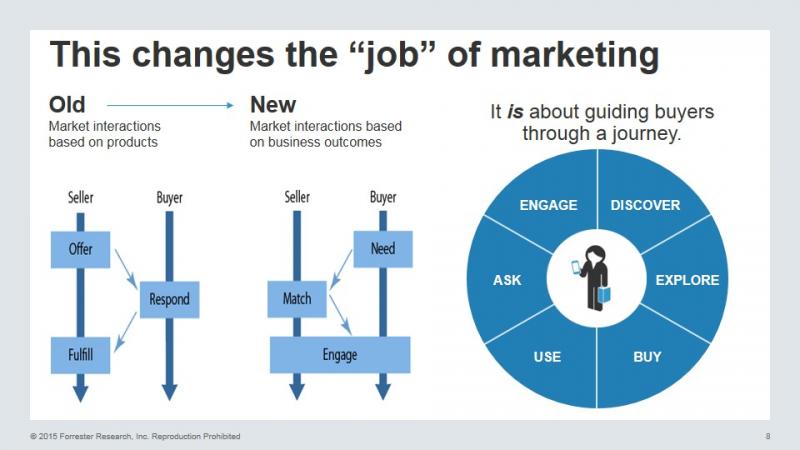Find Out And Remember Who Your Buyers Are At Each Stage
Last month, I enjoyed working with my colleague TJ Keitt as he prepared his report “B2B CX Professionals: Find The Full Range Of B2B Customers”, now published for customer experience professionals who are Forrester clients. As he writes, “Despite the clear benefits of improving B2B customer experience, there's a hitch: Before B2B CX professionals can help their customers, they have to identify them. But at most of the B2B firms we spoke to, it’s hard for CX professionals to locate and engage customers other than the complex groups of decision-makers with whom sales personnel interact in client organizations.”
An interesting point. It is definitely difficult to identify all the CX touchpoints between businesses when striving to optimize the customer experience, because the B2B interaction is long and complex:
- Successful B2B marketing causes (or overlaps with) sales interactions . . .
- . . . initiating contacts with order processing, legal, shipping, and receiving . . .
- . . . leading to exchanges with accounts payable, service, and support . . .
- . . . and so on (hopefully to advocacy and retention).
But note that, in the passage quoted above, TJ also took the trouble to highlight how complex the buying process is nowadays in B2B — and then refers, in an endnote, to our concept of the agreement network, where we describe how a business buying team can operate. But another point is this:
Not only is the B2B buyer a buying center, but the “buyer” is actually different at different times!
In my old HP days, we sold to the IT department, which provided hardware and software they had selected to their colleagues — famously called the “users.” I remember hearing often from accountants and other businesspeople at parties: “Oh, we’re using your printers —they’re quite good”; or “We have X accounting system installed now — what a pain, we had to completely change the way we did our business to fit the software.” Clearly, back in those days the users did not have a say in what they were using.
Of course, that has all changed, and not only for the tech industry. Business professionals (users, not executives) now influence how business solutions are selected — often they even find what they want and drive the purchase decision in their favor.
Which is why I still love to draw up these pictures when I am in client engagements — because I can make the point that the “buyer” is not only different, it is most likely to be a different person at different stages in their journey (what Forrester calls the customer life cycle.)

Buyers are probably now real users in the discover and explore phases. They may even be so in the buy phase, but the more complex B2B investments are planned and executed (i.e., “bought”) by teams of procurement professionals plus technology or business process experts, with the users stepping out of their way for that moment. Remember this when planning your marketing content and preparing your sales force. Target the right people, and their needs, across the whole life cycle. Define your buyers more precisely — one size no longer fits all.
By the way, I talked about exactly this challenge when I was interviewed recently by those nice people at the FIR Podcast Network.
Always keeping you informed! Peter